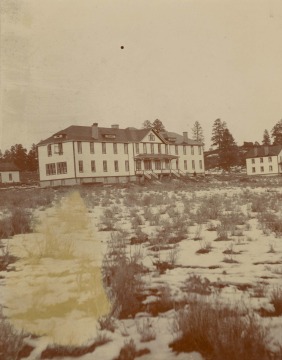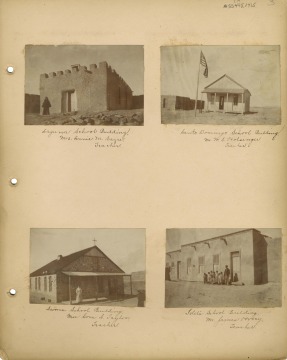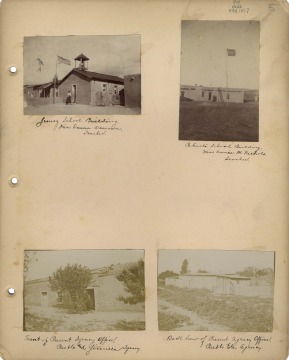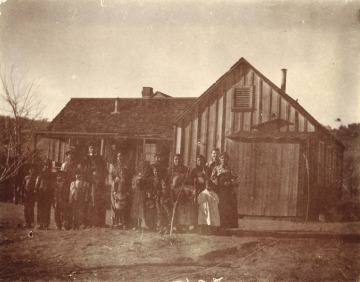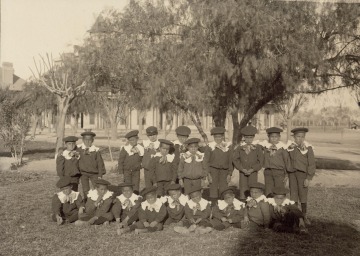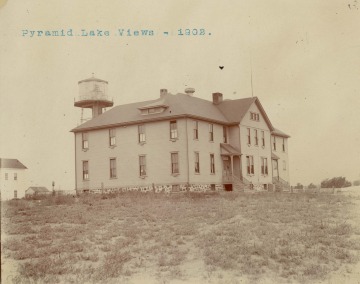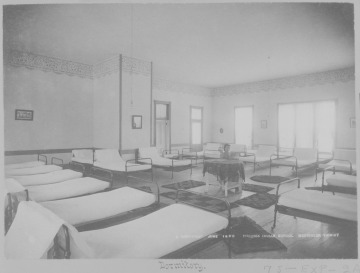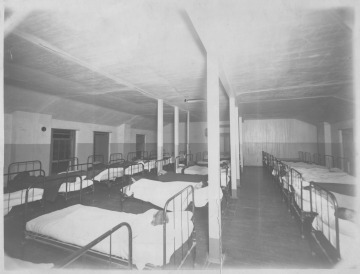1903: Overcrowding, poor ventilation contribute to deaths in boarding schools
Indian boarding schools are built hastily or adapted from existing barracks, and officials bring Native children to them with little prior health screening. Some children are healthy, while others are infected with tuberculosis and the eye disease trachoma, which are rampant on reservations. In the dormitories, overcrowding and lack of ventilation lead to the quick spread of disease, causing many deaths among students. The Office of Indian Affairs orders health screenings for incoming students.
- Theme
- Epidemics, Federal-Tribal Relations
- Region
- Arctic, California, Great Basin, Great Plains, Northeast, Northwest Coast, Plateau, Southeast, Southwest, Subarctic
Jicarilla Indian School, Dulce, New Mexico
Courtesy Wisconsin Historical Society
Page from an album of photographs of Pueblo Indian day schools, showing Laguna, Santo Domingo, Acoma, and Isleta school buildings
Courtesy Wisconsin Historical Society
Page from an album of photographs of Pueblo Indian Day Schools, showing the Jemez school building, the Pahuate school building, and a front and back view of the Pueblo and Jicarilla Agency offices.
Courtesy Wisconsin Historical Society
Students and teachers at Mesa Grande Day School, Mission Agency, California
Courtesy Wisconsin Historical Society
Pima Agency schoolchildren, Phoenix, Arizona
Courtesy Wisconsin Historical Society
Pyramid Lake Agency schoolhouse for Indian children, Pyramid Lake, Nevada, 1902
Courtesy Wisconsin Historical Society
Dormitory at Phoenix Indian school, 1900
Courtesy National Archives and Records Administration
Boys' dormitory at Santa Fe Indian School, 1906
Courtesy National Archives and Records Administration
